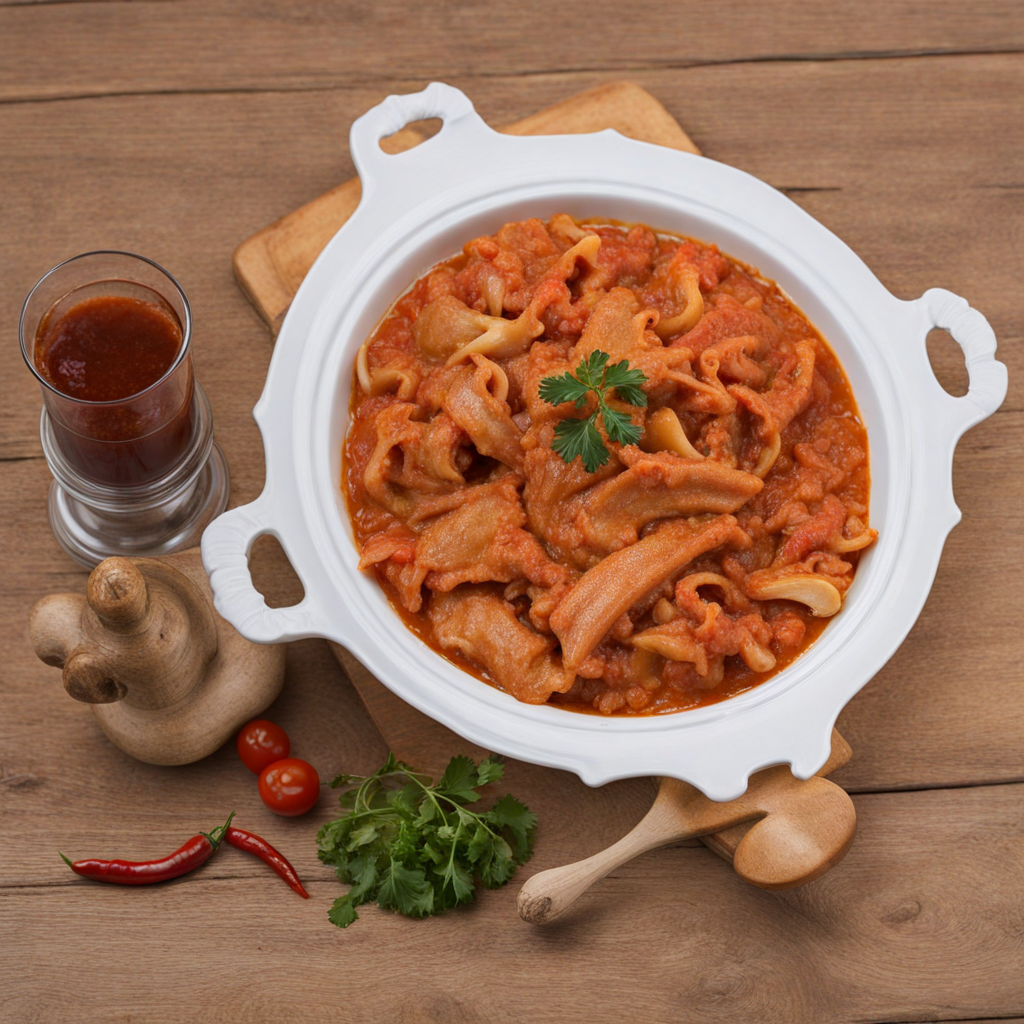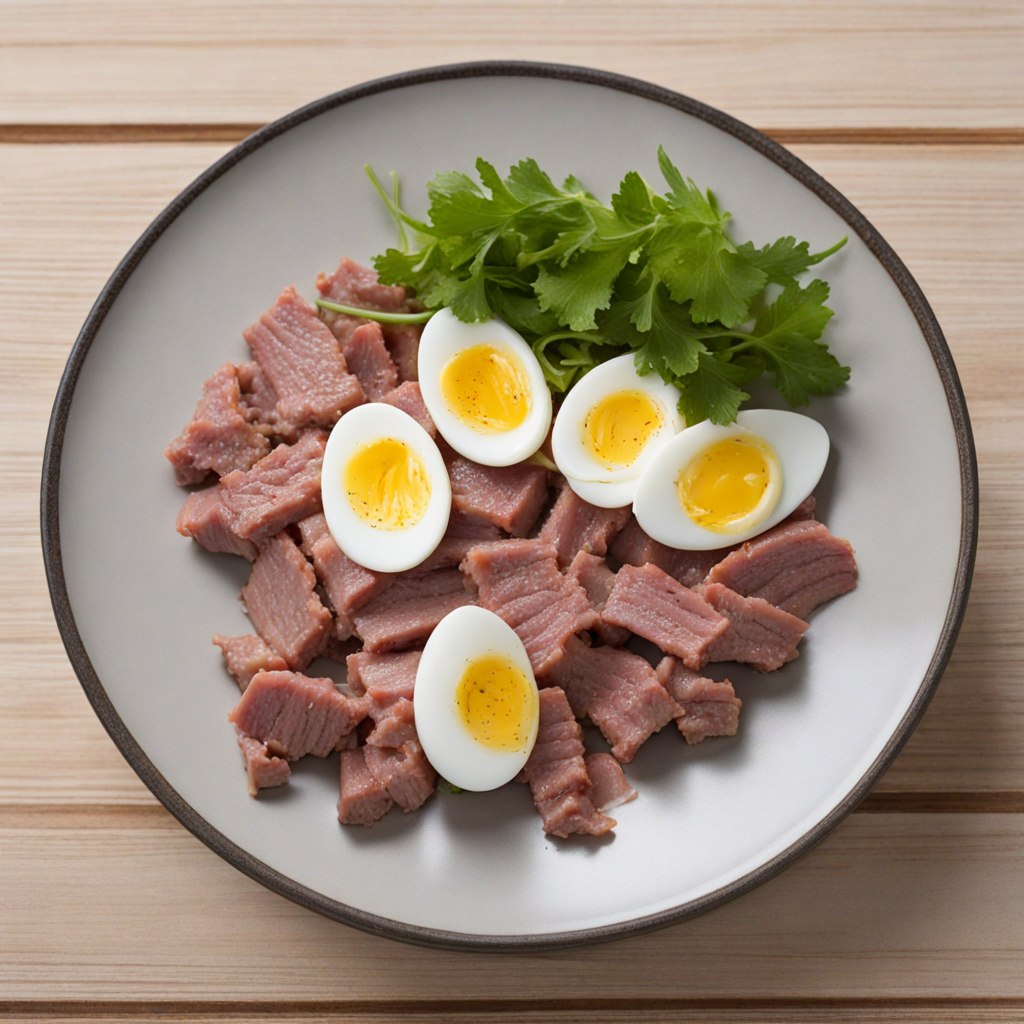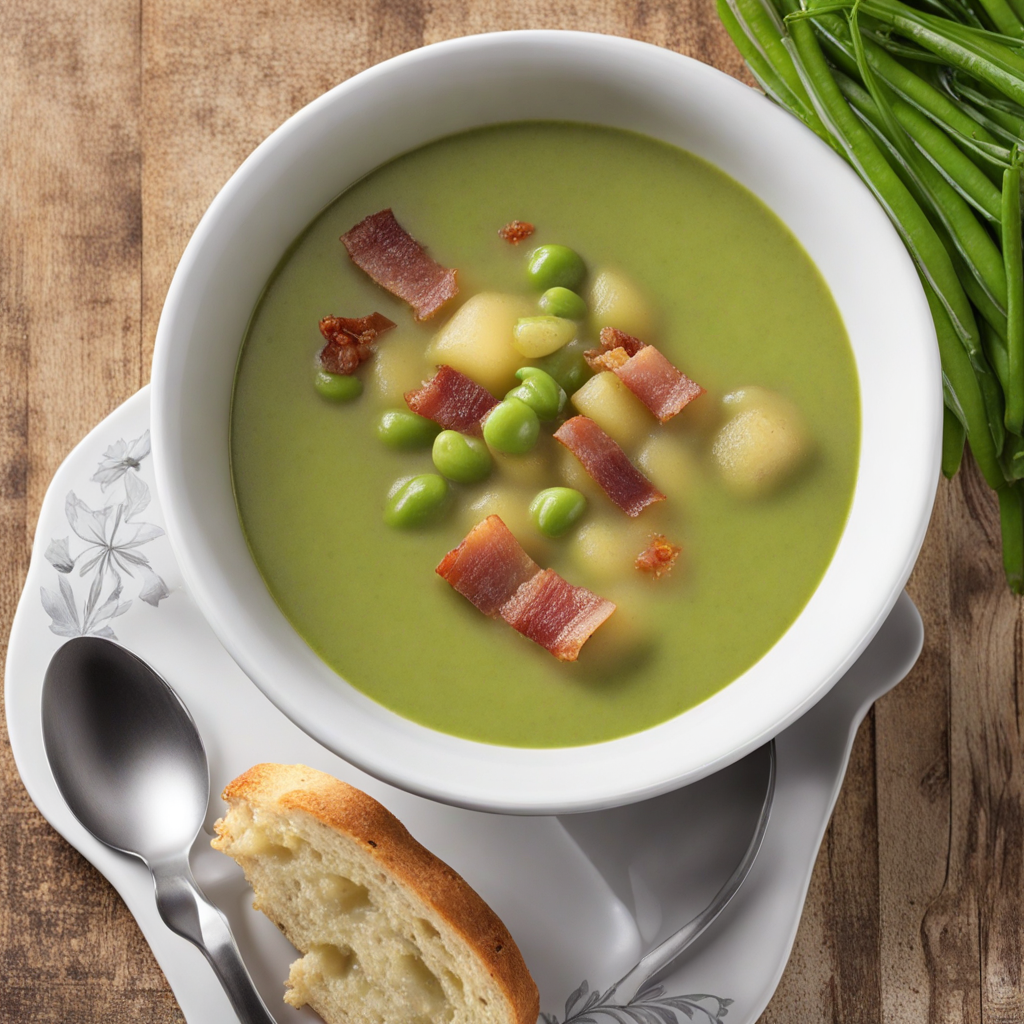Kuddelfleck
Kuddelfleck is a traditional dish from Luxembourg that showcases the country's rich culinary heritage. This unique dish primarily features beef tripe, which is the edible lining of a cow's stomach, prepared in a way that transforms its texture and flavor into something truly delightful. The tripe is typically boiled until tender, then cut into strips and sautéed with a mixture of onions, garlic, and spices, creating a fragrant base that enhances the natural flavors of the meat. The combination of slow cooking and seasoning results in a dish that's both hearty and comforting, perfect for those seeking a warm and satisfying meal. The heart of Kuddelfleck lies in its robust seasoning, often featuring a blend of paprika, bay leaves, and a hint of vinegar to balance the richness of the tripe. This dish is frequently served with a side of potatoes, whether they're boiled, mashed, or fried, allowing for a delightful contrast in textures. The simplicity of the ingredients lets the unique flavor of the tripe shine through, while the accompaniments round out the meal, making it a balanced and nourishing option. For those adventurous enough to try Kuddelfleck, it offers a fascinating glimpse into Luxembourg's culinary traditions. The dish is often enjoyed during family gatherings or special occasions, showcasing the communal aspect of dining in Luxembourg. With its unique taste and comforting nature, Kuddelfleck invites food lovers to step outside their comfort zones and experience a dish that highlights the importance of local ingredients and traditional cooking methods.
How It Became This Dish
The History of Kuddelfleck: A Culinary Icon of Luxembourg Kuddelfleck is a traditional dish that offers a fascinating glimpse into the culinary heritage of Luxembourg. With its unique combination of ingredients and cooking methods, Kuddelfleck is not just a meal; it is a representation of the cultural identity and historical evolution of the Grand Duchy of Luxembourg. This dish, often described as a hearty and robust stew, showcases the region's agricultural practices, its historical ties to neighboring countries, and the adaptability of its cuisine over the centuries. #### Origins of Kuddelfleck The origins of Kuddelfleck can be traced back to the rural communities of Luxembourg in the 19th century. The name itself is derived from the Luxembourgish words "Kuddelfleck," which translates to "kidney flap," referring to the primary ingredient in the dish—beef tripe, particularly from the stomach lining of animals. Historically, Kuddelfleck was a peasant dish, born out of necessity and resourcefulness. Farmers and butchers would often use every part of the animal, and Kuddelfleck was a clever way to utilize less desirable cuts of meat that were often overlooked. In Luxembourg, as in many parts of Europe, offal dishes were common due to economic constraints. The use of tripe and other offal not only reflects the practicality of early cooking but also highlights a cultural appreciation for nose-to-tail eating. This practice was essential for rural populations who relied heavily on agriculture and livestock farming for their sustenance. #### Ingredients and Preparation The preparation of Kuddelfleck typically involves a rich, slow-cooked stew that incorporates various ingredients. The primary component is, of course, the beef tripe, which is meticulously cleaned and prepared. In addition to tripe, Kuddelfleck often includes potatoes, carrots, onions, and a mix of spices, including bay leaves and black pepper. The dish is traditionally cooked in a broth that can be made from beef bones, adding depth and flavor to the stew. Cooking methods have evolved over time. While earlier versions of Kuddelfleck might have been prepared over an open fire in a cast-iron pot, modern iterations often utilize contemporary cooking techniques, such as pressure cookers or slow cookers. This adaptability has helped Kuddelfleck maintain its relevance in Luxembourg's culinary landscape, allowing it to be enjoyed in both traditional and contemporary settings. #### Cultural Significance Kuddelfleck is more than just a dish; it is a cultural emblem of Luxembourg. It reflects the agricultural roots of the country and the resourcefulness of its people. As a hearty and comforting meal, Kuddelfleck is often served during family gatherings and festive occasions, reinforcing its role in social and communal life. Moreover, the dish is commonly associated with the colder months, making it a staple of winter cuisine. It embodies the spirit of Luxembourgish hospitality, where hearty dishes are prepared to bring family and friends together. In this sense, Kuddelfleck is not only a culinary delight but also an expression of familial love and community bonding. Kuddelfleck also holds a place in Luxembourg's gastronomy, showcasing the influence of neighboring culinary traditions. The dish shares similarities with French and German cuisine, as Luxembourg is situated at the crossroads of these cultures. The use of tripe in Kuddelfleck can be likened to similar dishes found in France and Germany, such as "Andouillette" or "Sauerbraten." This intersection of culinary practices is a testament to Luxembourg's historical ties and cultural exchanges with its neighbors. #### Development Over Time As Luxembourg modernized throughout the 20th and 21st centuries, so too did Kuddelfleck. The dish has seen variations in preparation methods and ingredient lists, reflecting changes in dietary preferences and availability. For example, as vegetarianism and veganism have gained popularity, some chefs have begun to explore plant-based alternatives to traditional Kuddelfleck, creating versions that maintain the essence of the original while catering to modern dietary needs. Additionally, Kuddelfleck has found its way onto restaurant menus, where innovative chefs are reinterpreting the dish for contemporary palates. Gastronomic events and food festivals often feature Kuddelfleck, showcasing its adaptability and relevance in today’s culinary scene. This rise in popularity has also sparked interest in traditional Luxembourgish cuisine as a whole, encouraging a new generation to explore and celebrate their culinary heritage. Despite these modern influences, the core of Kuddelfleck remains unchanged. The dish continues to evoke nostalgia, bringing back memories of family meals and cultural traditions. Its significance as a comfort food has solidified its place in the hearts of Luxembourgers, both at home and abroad. #### The Future of Kuddelfleck Looking ahead, Kuddelfleck is poised to remain a beloved staple of Luxembourgish cuisine. As global culinary trends continue to evolve, the dish will likely adapt while preserving its traditional roots. The emphasis on sustainability and local sourcing may also influence how Kuddelfleck is prepared, encouraging chefs to seek out high-quality, locally produced ingredients. Furthermore, the growing interest in food heritage and traditional cooking techniques may lead to a resurgence in the appreciation for Kuddelfleck and similar dishes. Educational initiatives and workshops aimed at teaching younger generations about the importance of their culinary history will play a crucial role in sustaining the tradition of Kuddelfleck. In conclusion, Kuddelfleck is more than just a savory stew; it is a symbol of Luxembourg's rich cultural history and a reflection of its people's resilience and adaptability. As it continues to evolve, this cherished dish will undoubtedly remain a significant part of Luxembourg's culinary narrative, bridging the past with the present and future. Whether enjoyed in a cozy kitchen or a bustling restaurant, Kuddelfleck will always evoke a sense of home and heritage for those who have come to love this iconic Luxembourgish dish.
You may like
Discover local flavors from Luxembourg







